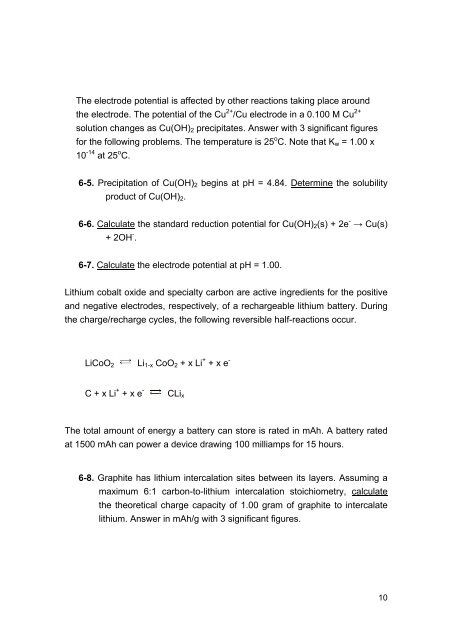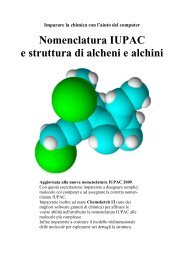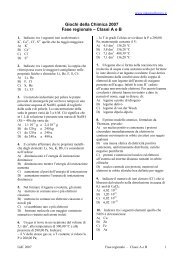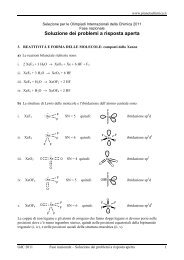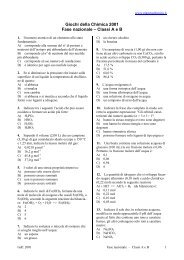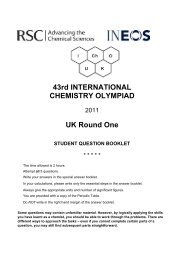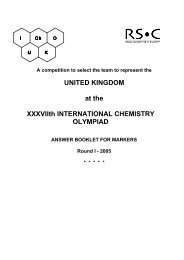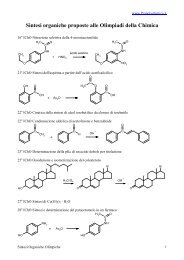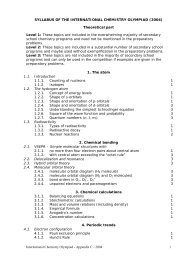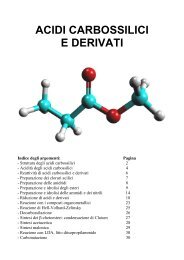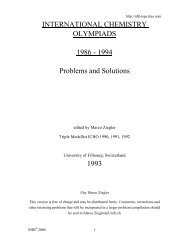Theoretical Test
Theoretical Test
Theoretical Test
Create successful ePaper yourself
Turn your PDF publications into a flip-book with our unique Google optimized e-Paper software.
The electrode potential is affected by other reactions taking place aroundthe electrode. The potential of the Cu 2+ /Cu electrode in a 0.100 M Cu 2+solution changes as Cu(OH) 2 precipitates. Answer with 3 significant figuresfor the following problems. The temperature is 25 o C. Note that K w = 1.00 x10 -14 at 25 o C.6-5. Precipitation of Cu(OH) 2 begins at pH = 4.84. Determine the solubilityproduct of Cu(OH) 2 .6-6. Calculate the standard reduction potential for Cu(OH) 2 (s) + 2e - → Cu(s)+ 2OH - .6-7. Calculate the electrode potential at pH = 1.00.Lithium cobalt oxide and specialty carbon are active ingredients for the positiveand negative electrodes, respectively, of a rechargeable lithium battery. Duringthe charge/recharge cycles, the following reversible half-reactions occur.LiCoO 2 Li 1-x CoO 2 + x Li + + x e -C + x Li + + x e -CLi xThe total amount of energy a battery can store is rated in mAh. A battery ratedat 1500 mAh can power a device drawing 100 milliamps for 15 hours.6-8. Graphite has lithium intercalation sites between its layers. Assuming amaximum 6:1 carbon-to-lithium intercalation stoichiometry, calculatethe theoretical charge capacity of 1.00 gram of graphite to intercalatelithium. Answer in mAh/g with 3 significant figures.10


